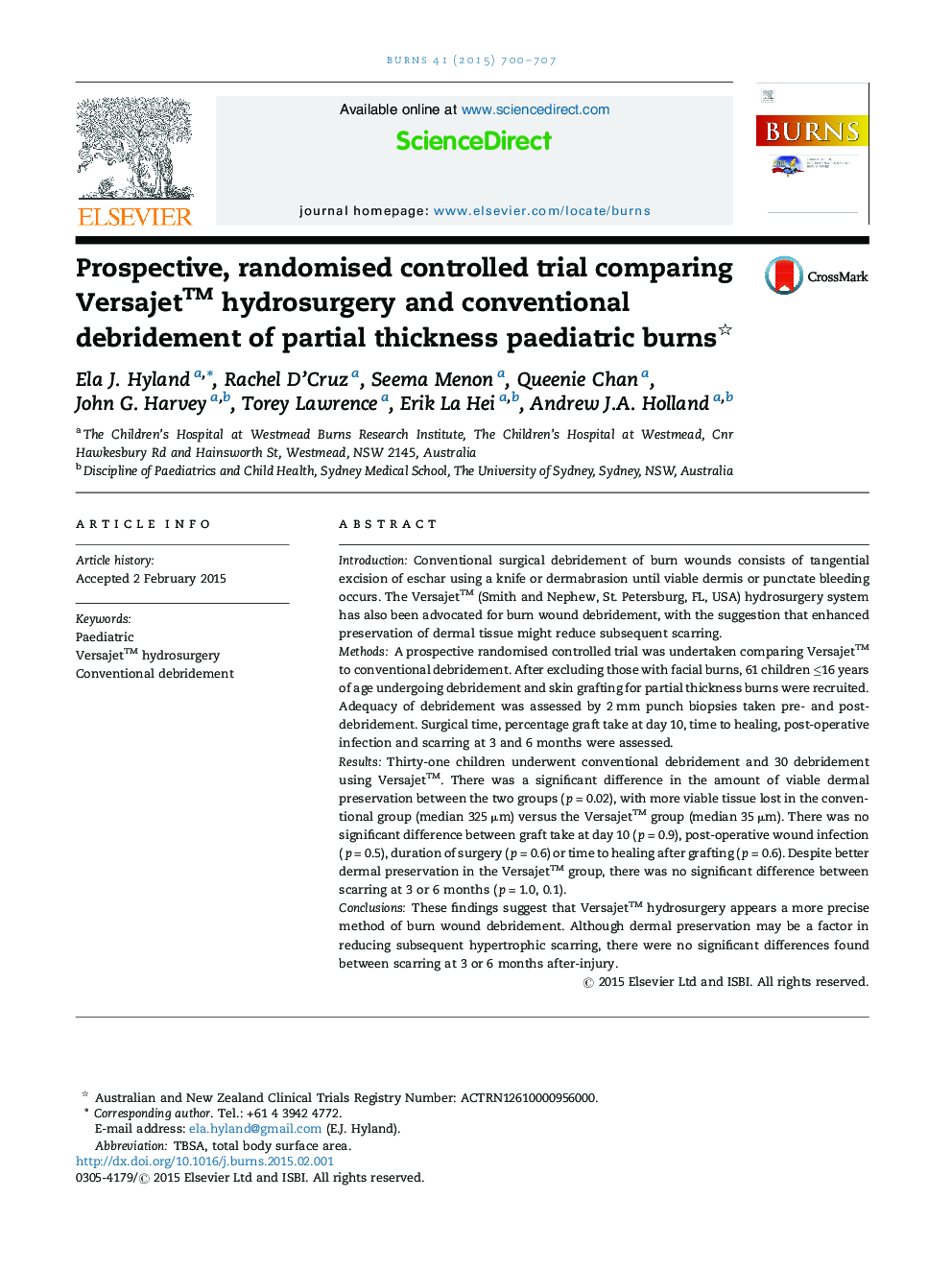| کد مقاله | کد نشریه | سال انتشار | مقاله انگلیسی | نسخه تمام متن |
|---|---|---|---|---|
| 3104285 | 1191648 | 2015 | 8 صفحه PDF | دانلود رایگان |
• Versajet™ in children would seem an effective means of burn wound debridement.
• Versajet™ appears to be more precise method than conventional techniques.
• No differences appear in healing between Versajet™ or conventional techniques.
• Operating times using Versajet™ or conventional debridement were equivalent.
• No differences in scarring were found using Versajet™ or conventional debridement.
IntroductionConventional surgical debridement of burn wounds consists of tangential excision of eschar using a knife or dermabrasion until viable dermis or punctate bleeding occurs. The Versajet™ (Smith and Nephew, St. Petersburg, FL, USA) hydrosurgery system has also been advocated for burn wound debridement, with the suggestion that enhanced preservation of dermal tissue might reduce subsequent scarring.MethodsA prospective randomised controlled trial was undertaken comparing Versajet™ to conventional debridement. After excluding those with facial burns, 61 children ≤16 years of age undergoing debridement and skin grafting for partial thickness burns were recruited. Adequacy of debridement was assessed by 2 mm punch biopsies taken pre- and post-debridement. Surgical time, percentage graft take at day 10, time to healing, post-operative infection and scarring at 3 and 6 months were assessed.ResultsThirty-one children underwent conventional debridement and 30 debridement using Versajet™. There was a significant difference in the amount of viable dermal preservation between the two groups (p = 0.02), with more viable tissue lost in the conventional group (median 325 μm) versus the Versajet™ group (median 35 μm). There was no significant difference between graft take at day 10 (p = 0.9), post-operative wound infection (p = 0.5), duration of surgery (p = 0.6) or time to healing after grafting (p = 0.6). Despite better dermal preservation in the Versajet™ group, there was no significant difference between scarring at 3 or 6 months (p = 1.0, 0.1).ConclusionsThese findings suggest that Versajet™ hydrosurgery appears a more precise method of burn wound debridement. Although dermal preservation may be a factor in reducing subsequent hypertrophic scarring, there were no significant differences found between scarring at 3 or 6 months after-injury.
Journal: Burns - Volume 41, Issue 4, June 2015, Pages 700–707
